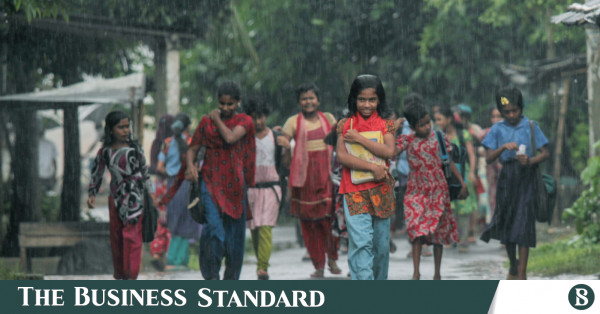

Bangladesh is experiencing a surge in births amid an ageing population, which raises questions about the country's future [c8bf89fc]. While many developed nations are facing declining populations, Bangladesh has been commended for reducing its fertility rate. However, recent data shows that the total fertility rate (TFR) has increased slightly [c8bf89fc]. The higher birth and fertility rates run counter to Bangladesh's efforts to control population growth. The increased number of babies born during the pandemic is expected to contribute to a rise in the working-age population, which will play a crucial role in caring for the elderly [c8bf89fc]. However, Bangladesh's ageing population is also increasing rapidly, and it is estimated that the country will become a full-fledged ageing society by 2048 [c8bf89fc]. The recent surge in births prompts consideration of whether it is a positive development for the country. Experts emphasize the need to prioritize further reduction in the fertility rate and invest in health, education, and formalizing the economy to prepare for an ageing population [c8bf89fc]. While the decline in birth rates may reduce the growth rate of GDP, Bangladesh's situation is not expected to be as severe as countries like China or Japan. Bangladesh stands to gain from China's shrinking population, potentially attracting low-skilled, labor-intensive industries and investments [c8bf89fc]. However, initiatives to bring down the fertility rate should continue, as Bangladesh is already densely populated and faces challenges in providing employment opportunities and improving quality of life [c8bf89fc]. The country needs to develop a formal elder care system and restructure the healthcare system to support the ageing population [c8bf89fc]. Learning from Japan's experience in managing an ageing population and China's experience with population control policies and gender imbalances can provide insights [c8bf89fc]. While an ageing population is often associated with slower economic growth, good health among older individuals can moderate or eliminate adverse effects. Policies supporting the growing older population, including healthcare, social welfare, and financial planning for retirement, are crucial to avoid future economic and social challenges [c8bf89fc].
In the United Kingdom, demographics are also playing a significant role in shaping the future. The country is facing an ageing population and the need for public service reform to avoid a potential catastrophe [b67efd2a]. Increased resources in public services are not translating into improved services. The number of GP appointments has increased, but so has the demand due to the growing number of people aged 70 or over [b67efd2a]. Demographics play a massive role in the impact on public finances, with children consuming more spending, retired people requiring more spending, and working-age adults contributing the most tax receipts [b67efd2a]. The proportion of pensioners in the population is increasing rapidly, while the working-age population is falling [b67efd2a]. This puts upward pressure on spending and downward pressure on tax receipts. The ageing of society is the main cause of the rising tax burden [b67efd2a]. Dealing with this may require abandoning sacred cows and having a more nuanced discussion about public services [b67efd2a]. The impact of demography needs to be reckoned with for effective analysis and policy decisions [b67efd2a].